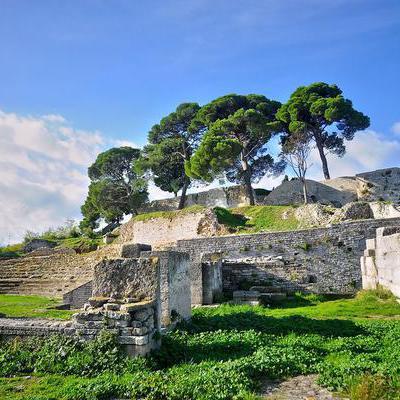Open letter to the Archaeological Museum of Istria
Anxious citizens addressed us on the Association’s Green phone yet again, this time due to felling of trees near the Arena.
According to them, they were not informed nor offered an explanation why the trees are to be felled. Although after on-ground inspection we saw that for the most part the felling is that of bushes and a small tree, we can not help but wonder why the Archaeological Museum again ignores the importance of urban greenery, and why, as always, the only solution is to cut down a tree or two at some archaeological site? In fact, this is the third case of felling of the trees that have left their roots in one of the archaeological sites and which were sacrificed for archaeological heritage.
Last year, citizens reacted due to felling of trees at the Pula Castle - the Little Roman theater remained without its recognizable view of tall pines, and we also remember the felling of centuries-old hackberries at the Juraj Dobrila Park near the cathedral whose roots were destroyed by bulldozers, and ultimately had to be cut down. It is incomprehensible that fine brushes and precision tools are used for the excavation of archaeological findings, while at the same time excavators dig around living trees.
Could a little "softer" technique also have been applied in the performance of such work?!
Because these trees are an important part of our natural heritage and should be preserved for a number of reasons! In neighboring European countries in such cases, the city’s competent services use cranes to transplant large trees, in order to preserve them for the next generation. Unfortunately, we do not even consider different solutions, other than digging with heavy machinery or using chain saws. Since Pula is one big archaeological site, we can assume that valuable historical findings can be found under each park, tree or bush.
Therefore, we believe that the City and the Archaeological Museum should have a little more sensitivity and find a compromise between "establishing valuable relations between cultural and natural heritage" as required by the National Strategy for Physical Planning of the Republic of Croatia. We are aware of the importance of preserving archaeological sites, but we stress that the green fund is also a significant part of the cultural and natural heritage of the town of Pula and we should therefore apply particular care to it.
We suggest to the Archaeological Museum that, despite the fact that the trees at the registered archaeological sites are not protected and therefore special permission for their felling is not needed, the museum should in time inform citizens about their intentions, and consider if and how to preserve the trees before felling and that it should treat the city's green fund with more care.

